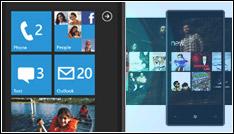Windows Phone 7 Boasts More Apps

Microsoft’s Windows Phone 7 has gained applications and developers, while questions remain over its popularity with consumers
Microsoft claims its Windows Phone 7 ecosystem has grown to 9,000 apps, with a base of 32,000 developers. While that doesn’t put the company’s nascent smartphone platform in the same realm as Apple’s iOS or Google Android, which respectively boast hundreds of thousands of apps, it nonetheless suggests some growth on the developer side of the equation.
Moreover, Microsoft is adjusting its policies for mobile developers, supposedly based on community feedback. For starters, the company is raising the limit on the number of zero-fee certifications that can be performed for free apps, from five to 100.
New policies
Second, Microsoft has switched from mandatory to optional a policy that governed the inclusion of contact information for app support. “This is still a strong recommended best practice,” Todd Brix, senior director for Microsoft’s Mobile Platform Services Product Management, wrote in an 8 March posting on The Windows Phone Developer Blog, “but we recognised and responded to developer feedback that this policy was creating excessive drag on the certification process for developers without commensurate user benefit for all apps.”
Microsoft also plans on updating its Marketplace APA (Application Provider Agreement) “to clarify that we also permit applications under the Eclipse Public Licence, the Mozilla Public Licence and other, similar licences,” according to Brix. The company is apparently considering the accommodation of additional OSS licences.
A new Global Publisher Programme will now allow developers worldwide to submit apps to the Windows Phone Marketplace. Based on feedback, Microsoft also found that trial apps result in higher sales, with nearly one out of every 10 downloaded trial apps eventually converting to a purchase. Users, apparently, enjoy paid apps with trial functionality.
“There are many ways to measure the vitality of a marketplace and I’m pleased to report that we’re seeing strong results across several fronts,” Brix wrote, “from the number of available apps and popularity of our tools, to more tangible developer benefits stemming from monetisation opportunities that drive downloads and sales.”
Consumer adoption?
However, Windows Phone 7’s rate of consumer adoption remains an open question. In a new report, research firm comScore suggests Microsoft’s share of the US smartphone platform market dipped 1.7 percentage points between October 2010 and January 2011, from 9.7 percent to 8.0 percent. That trailed Google, which ended January with 31.2 percent of the market, Research In Motion with 30.4 percent and Apple with 24.7 percent. Microsoft did manage to beat Palm, whose share declined 0.7 percent during that three-month period to 3.2 percent.
That reporting period overlaps with Microsoft’s launch of Windows Phone 7, which hit store shelves in October 2010 before its US release in early November. While the company freely confirms that more than 2 million Windows Phone 7 devices have been sold by manufacturers to retailers, it remains reluctant to share how many of those devices may have reached consumers’ hands. In any case, the consumer base for Windows Phone 7 could expand later this year with the launch of more devices on CDMA-based networks such as Verizon.
